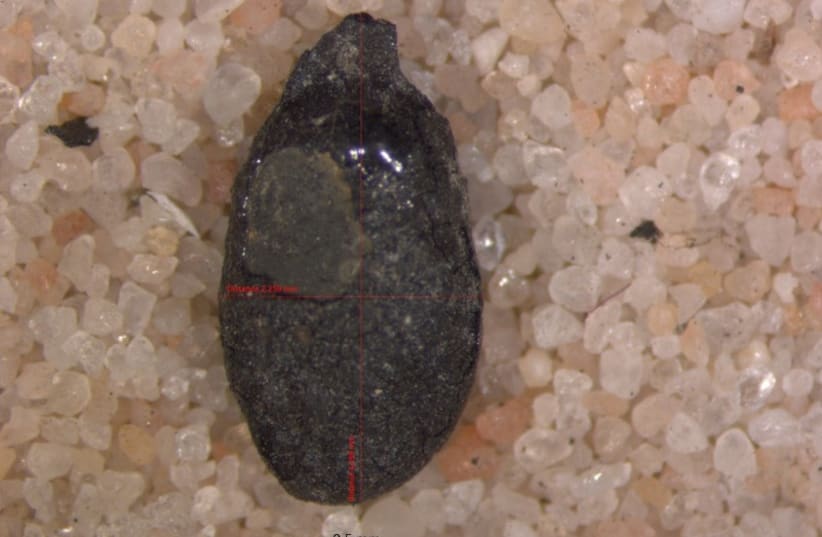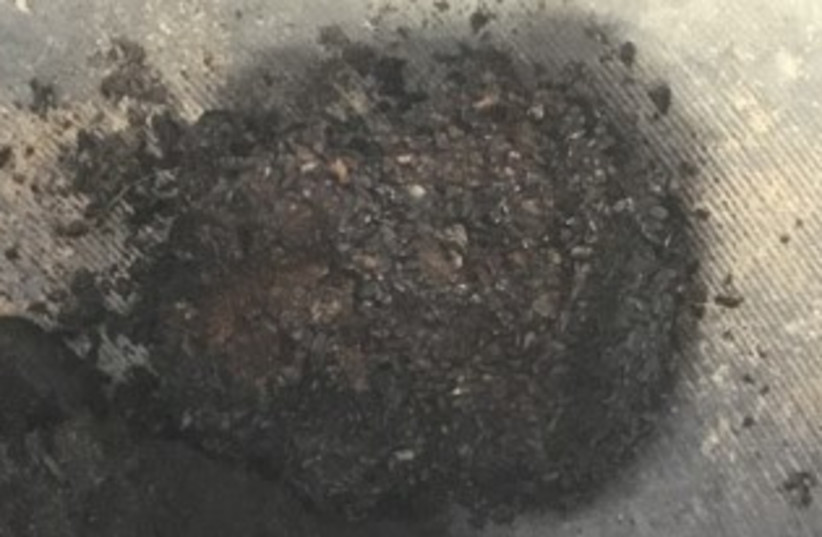An especially large concentration of linseeds found in the excavations at Tel Burna may be an indication of economic and agriculture modification due to geopolitical changes in the area from the 8th century BCE, said researchers excavating the site.
The finds also hint that the site could have been an important site for the production of linen garments.
Linen was an important textile in the ancient world and in the Bible, the robes of the Temple priests were woven from linen, as were the curtains of the Tabernacle. In the New Testament martyrs were buried in fine linen. And in ancient Egypt, the cloth, which was also used for mummification, represented purity.
The site of Tel Burna is located in the Shephelah (lowlands) region in Israel, along the banks of Nahal Guvrin near modern-day Kiryat Gat, which served as a border between the kingdoms of Judah and Philistia in the Iron Age. A fertile area that supported agricultural production, the region became known as the breadbasket of the south and has been suggested by some scholars as the best candidate for Biblical Libnah. Finds from the site season indicate that the city was an important entity in the Bronze and Iron Ages.
While a broad range of crop species have been found in the area, there is a notable change from an economy based mainly on liquid products such as olive oil and wine in the 7th century BCE to one based on grains in the 7th century BCE, said Ariel University Prof. Itzik Shai, director of the excavation.
Their findings on the agricultural resources of Iron Age Judah were presented at the Society for Near Eastern Landscape Archaeology conference held online due to COVID-19 March 2-4 by researcher Andrea Orendi from the Eberhard Karls University in Tübingen, Germany.
“We know that in the late 8th century BCE Assyrian King Sennacherib led a campaign against Judah and he claimed to have destroyed 46 cities of Judah,” said Shai. “One of the results is that he took some of the area from Judah and gave it to the Philistines and in the 7th century BCE the Philistine city of Ekron became the city with the largest oil production in the area for all the Assyrian empire. So probably the people of Libnah, since it was a part of Judah, needed to change their economy and agriculture from oil, which was now controlled by the Philistine Ekron, so they changed it to grain.”
ORENDI NOTED that they have found more than a thousand charred linseed – also known as flax seed – at the excavation, an unusual find in the Levant area even though it was one of the first domesticated plants to be cultivated in Israel.
“They are very fragile so when they get burned or in contact with heat they puff up and then get destroyed,” she said.
The rare large concentration of the seeds found in several small areas at the site indicate their cultivation was an important crop, said Shai.
They have also found several concentrations of loom weights, which probably reflects the use of the flax not necessarily for oil but also for garments, he added. From texts and other sources from the ancient near east it is known that flax was used for the production of linen textiles in addition to sheep wool, he said.
The researchers are analyzing the seeds’ size in order to determine for what they were used. The larger seeds were usually used in oil production while the smaller seeds were used for fiber production, namely linen textiles, said Orendi.
“So far the seeds are right in the middle so we can’t tell,” she said.
Other crops found in the dig from the Iron Age II period include barley, naked wheat – a wheat species easier to process for eating, hard emmer wheat, many lentils, beans and a small legume called bitter vetch which is now used as animal feed. There are also grapes, olives, figs and pomegranates.
A large amount of grass peas was also found from the Canaanite period, in a cultic ritual context in the excavation, noted Shai. The toxic plant needed to be soaked and cooked to extract the toxins and is thought to have been used in temple cultic ceremonies by Canaanite priests.
There are not many grass pea seed finds in the Southern Levant said Orendi and it is noteworthy that along with the finds in Tel Burna the crop remains have also been found at nearby Tel Ekron and Tel Batash.
“When you find grass pea seeds there are usually only single remains, five or six seeds, but in these sites there are 60 or 100,” she said.

